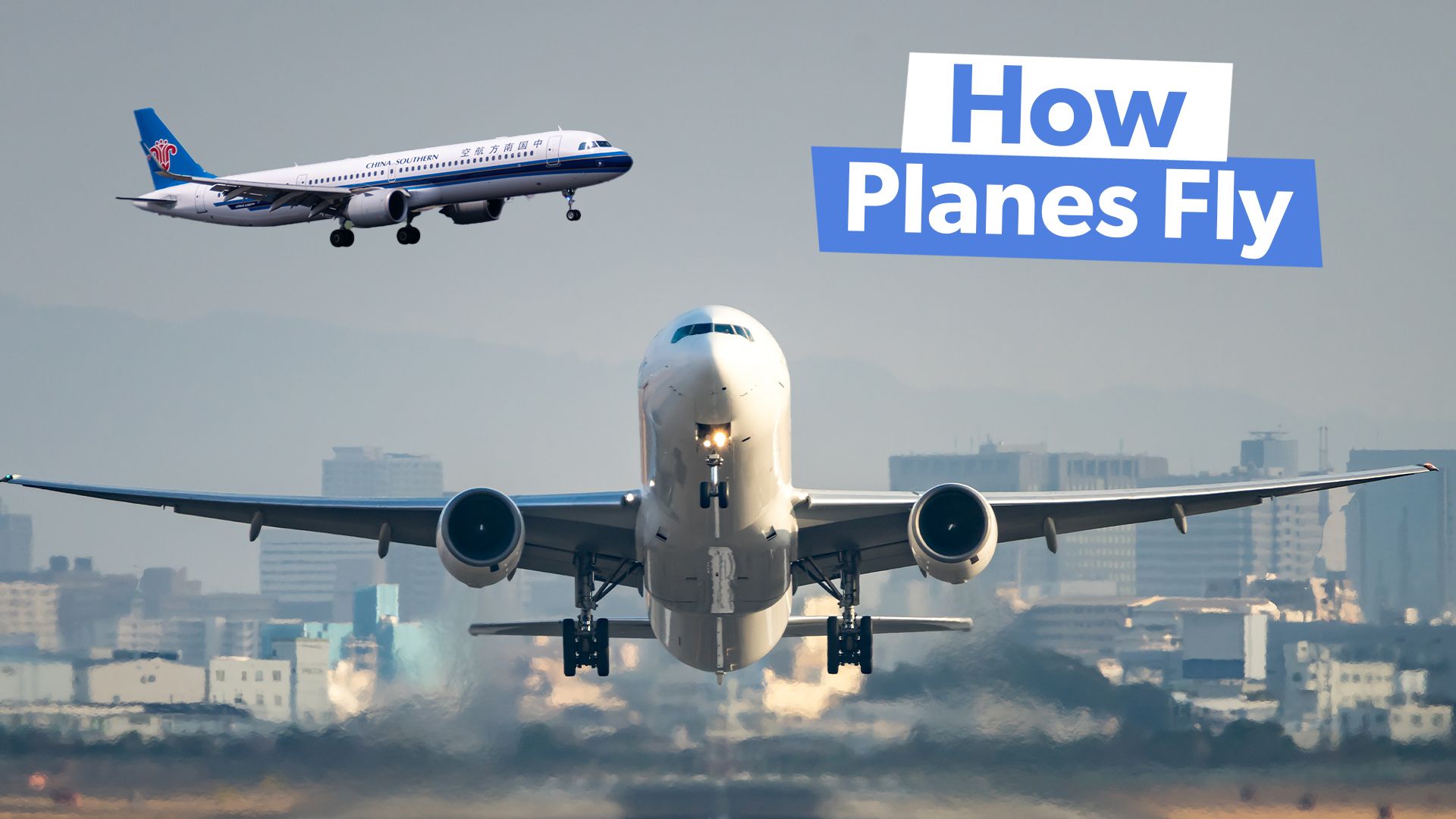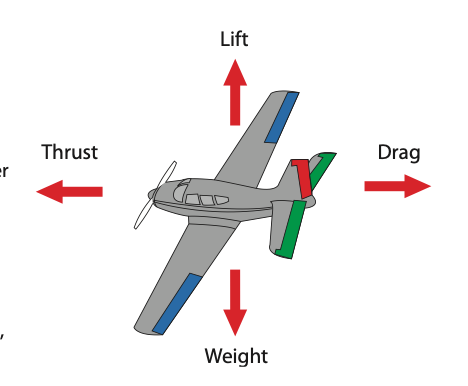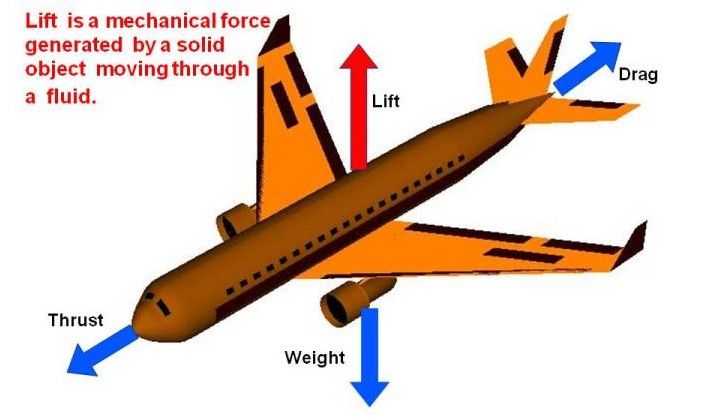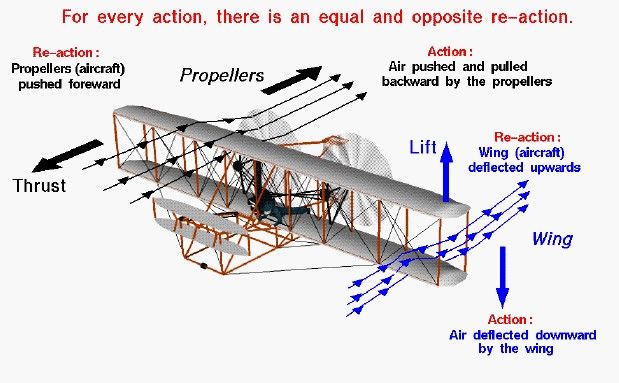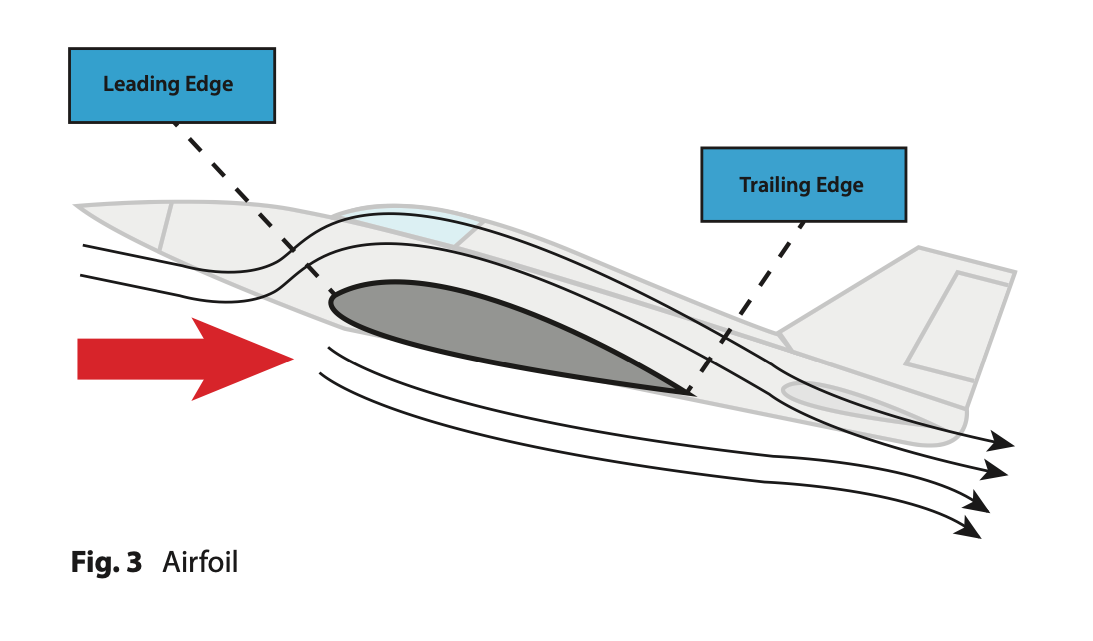Air travel has become routine, and people regularly fly or board flights without knowing how it works. How do aircraft take off, with takeoff weights sometimes exceeding a million pounds?
The aerodynamics of today’s aircraft have not changed much since the Wright brothers used the same principles of aerodynamics in 1903. To understand flight, we need to understand the forces of flight: lift, gravity, drag, and thrust, the Bernoulli Principle, and Newton’s first and third laws of motion.
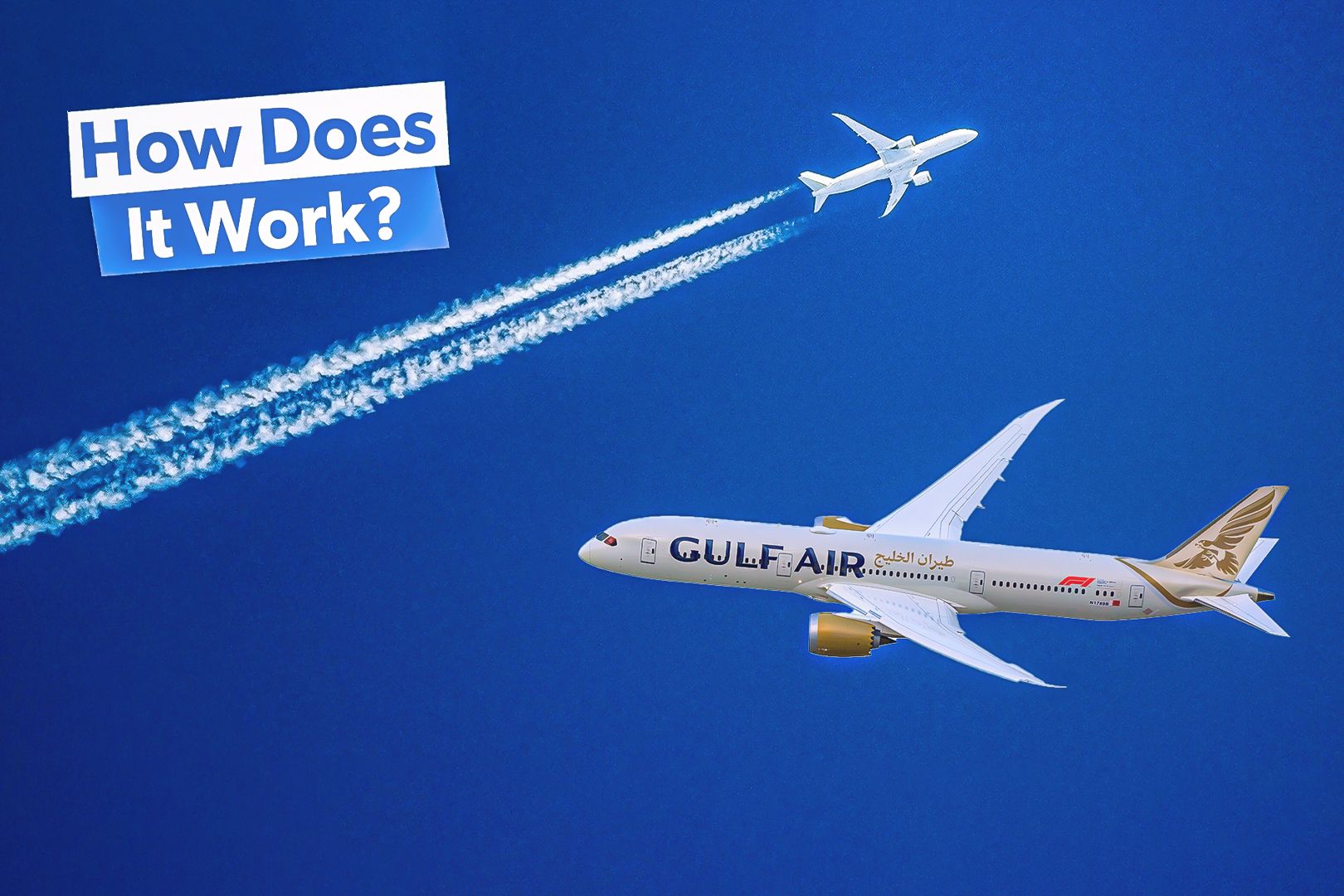
Related
How Do Planes Fly & What Keeps Them In The Air?
Airplanes fly due to the balance of lift, weight, thrust, and drag, although some questions still remain regarding the creation of lift.
Lift, gravity, drag, and thrust
When an aircraft’s lift, gravity, drag, and thrust are in balance, it can fly at high speeds and over long distances. Lighter airplanes will need less thrust and lift to go up and stay in the air. Adding weight at the rear of a plane will move the center of gravity forward.
Photo: NASA.gov
Lift
Lift is the critical aerodynamic force that keeps objects in the air. It opposes weight and helps keep an aircraft in the air. To fly a plane, lift presses in the opposite direction of gravity. The weight of an object determines how strong the lift will need to be.
Photo: NASA.gov
Gravity
Gravity is the force that works vertically by pulling all objects, including aircraft, toward the Earth. Thrust is the force that keeps it moving forward.
Drag
Drag is the force that slows an aircraft down. It tends to slow an airplane’s forward movement. Airplanes are designed to be long and skinny, with a pointed nose, to help them move through the air with reduced resistance or drag. Drag only occurs when a solid object and a fluid, like air or water, move against each other. If there’s no fluid, there’s no drag. The difference in speed between the object and the fluid causes drag. For drag to exist, there must be movement, either the object through the fluid or the fluid past the object.
Thrust
Thrust is the force that is generated by the engines of an aircraft in order for the aircraft to move forward. In a paper airplane, the thrust is generated by someone’s arm throwing it. If an aircraft had a wider surface, it would have to push more air out of the way, requiring more energy to move forward. Thrust is the force that keeps it moving forward.
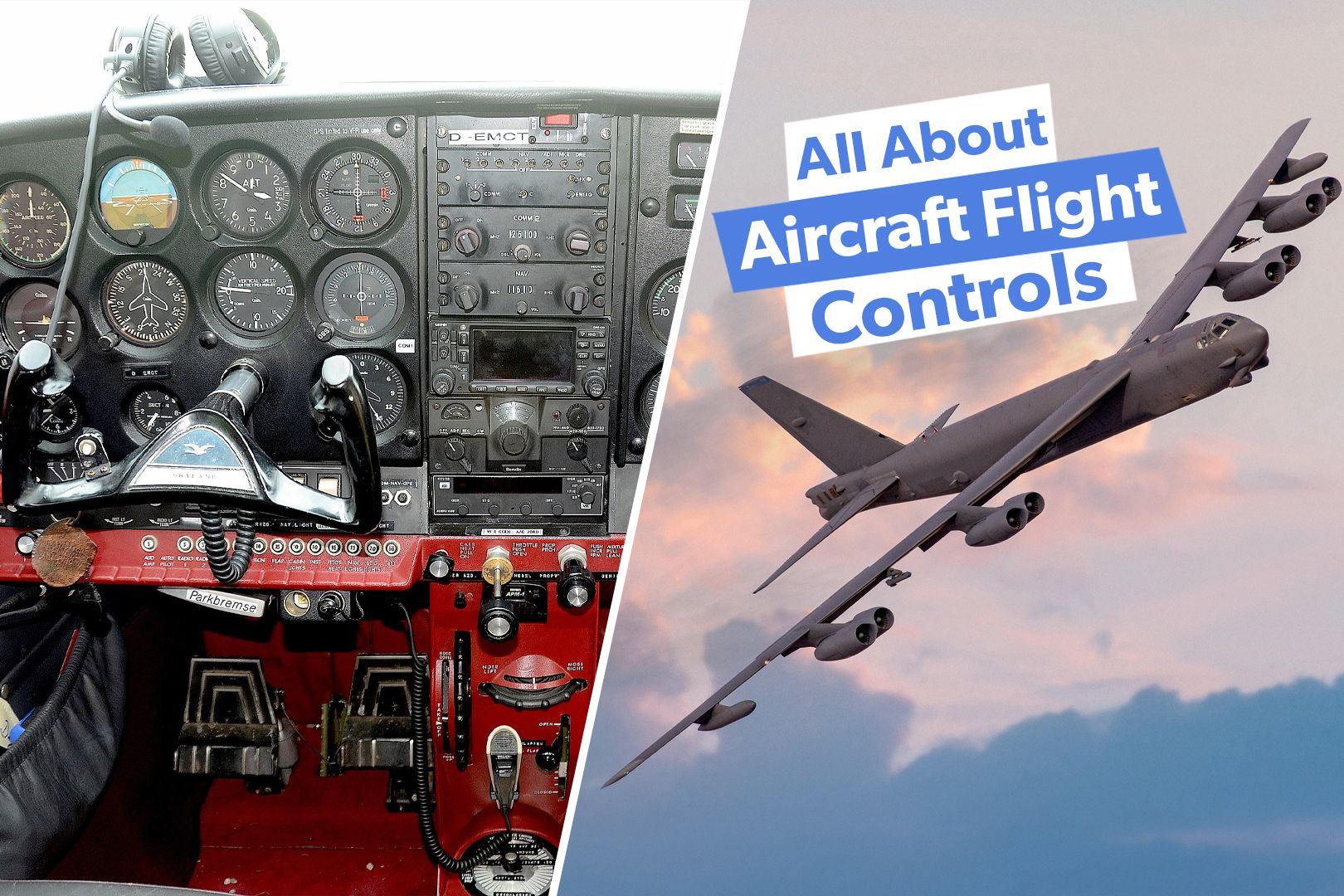
Related
Aircraft Flight Controls: The Simple Flying Guide
A guide on how the aircraft is controlled in flight utilizing primary and secondary flight control surfaces.
How aircraft take flight
Two fundamental theories are frequently discussed when explaining how aircraft manage to take to the skies: Newton’s Laws of Motion and the Bernoulli Principle. Newton’s Laws of Motion, particularly the third law, states that for every action, there is an equal and opposite reaction, and it helps to explain the forces at work in propelling an aircraft forward and upward. On the other hand, the Bernoulli Principle deals with the relationship between the velocity and pressure exerted by a moving fluid. It provides insight into how lift is generated over the wings, allowing the aircraft to ascend.
Newton’s Laws of Motion
Sir Isaac Newton’s (1642 -1727) laws of motion apply to understanding how airplanes fly. Newton, an English physicist, mathematician, astronomer, alchemist, theologian, and natural philosopher, has long been considered one of the most influential men in human history. In 1687, Newton published “Philosophiae Naturalis Principia Mathematica,” also known as “Principia.” In his book, Newton explained the three laws of motion.
Newton’s first and third laws of motion help explain the phenomenon of flight. The first law explains that an object at rest remains at rest while an object in motion remains in motion unless acted upon by an external force. Newton’s second law states that force equals the change in momentum per change in time. Newton’s third law states that for every action, there is an equal and opposite reaction.
Photo: NASA.gov
Powered aircraft, like the Wright 1903 Flyer, are great examples of Newton’s third law of motion at work. This law explains how an aircraft can lift off the ground and move forward. The aircraft’s wings push air downwards, and in response, the air pushes the wings upward, creating lift. Similarly, the aircraft’s propellers push air backward. This action makes the air push the propellers and the whole aircraft forward.
The Bernoulli Principle
In 1738, scientist Daniel Bernoulli (1700–1782) published “Hydrodynamica,” studying how fluids behave in motion. Air, like water, is a fluid as it flows and can take on different shapes. Bernoulli asserts that as a fluid moves faster, it produces less pressure; conversely, slower-moving fluids produce greater pressure.
Photo: NASA.gov
Aircraft wings are designed in a specific shape known as an airfoil. The design features a curved top surface and a relatively flatter bottom. Air flows over and under the wings when the aircraft is in motion. Bernoulli’s equation explains that the air traveling over the curved top surface speeds up and meets the air flowing underneath faster. According to Bernoulli, this increase in speed leads to a decrease in pressure. As a result, the pressure on the top of the wing is lower than the pressure beneath it, creating lift. However, it’s important to note that Bernoulli’s principle does not explain a plane’s ability to fly upside down or with flat wings.
Taking flight in summary
Air travel relies on the principles of aerodynamics, which haven’t changed significantly since the Wright brothers’ first flight in 1903. Four forces govern the flight of an aircraft: lift, which keeps it airborne by opposing gravity; gravity, which pulls it towards Earth; drag, which slows its forward motion; and thrust, generated by engines to move it forward. An aircraft can fly efficiently when lift equals gravity and thrust equals drag. Understanding flight also involves Newton’s Laws of Motion and the Bernoulli Principle. Newton’s laws explain how forces act on the aircraft, with the first and third laws being particularly relevant to flight dynamics. Meanwhile, the Bernoulli Principle describes how faster-moving fluids, like air, have lower pressure, which is fundamental to how lift is generated over an aircraft’s wings. This intricate balance of forces and principles allows aircraft to take off, fly, and land safely despite their significant weight.

